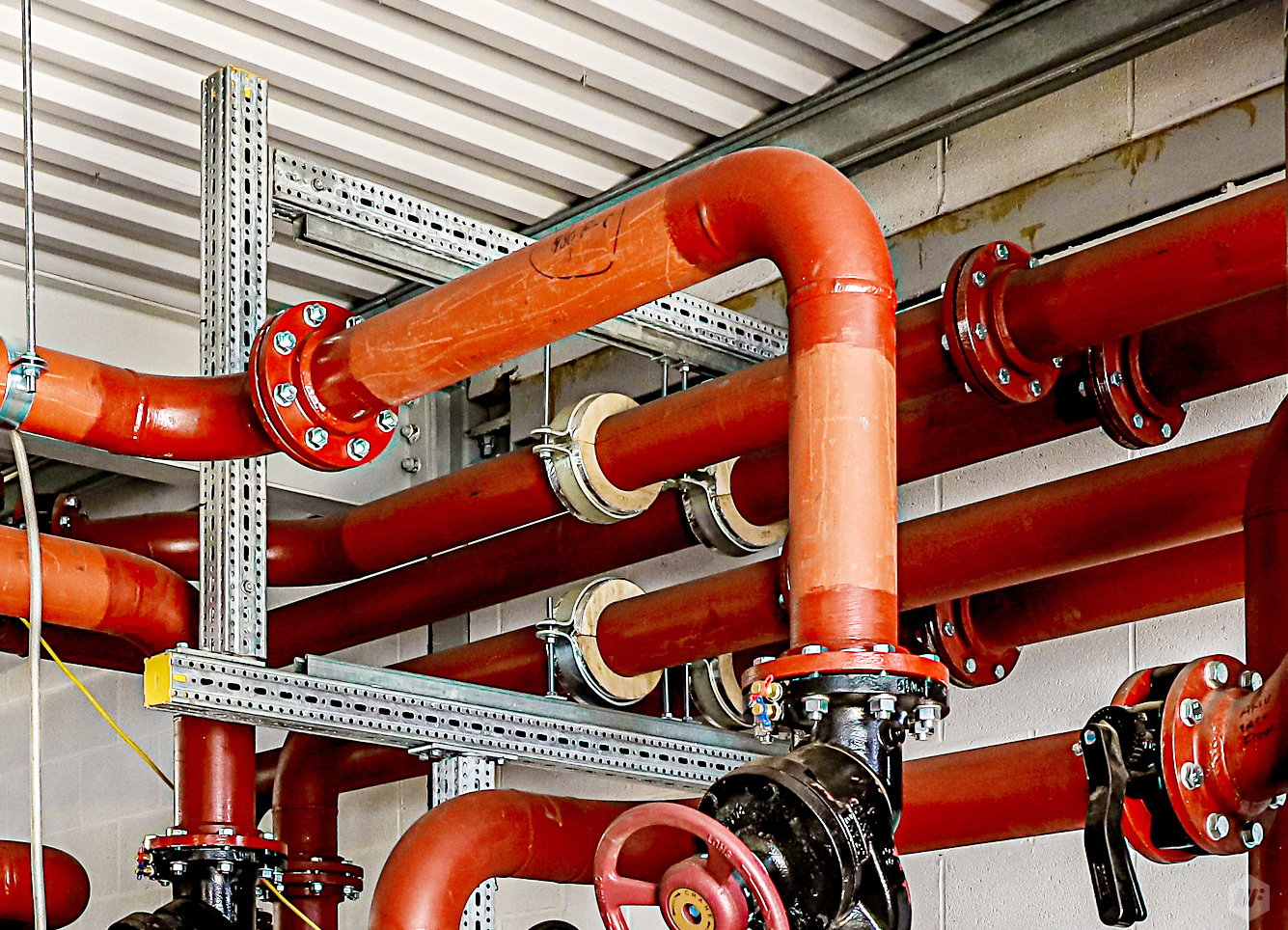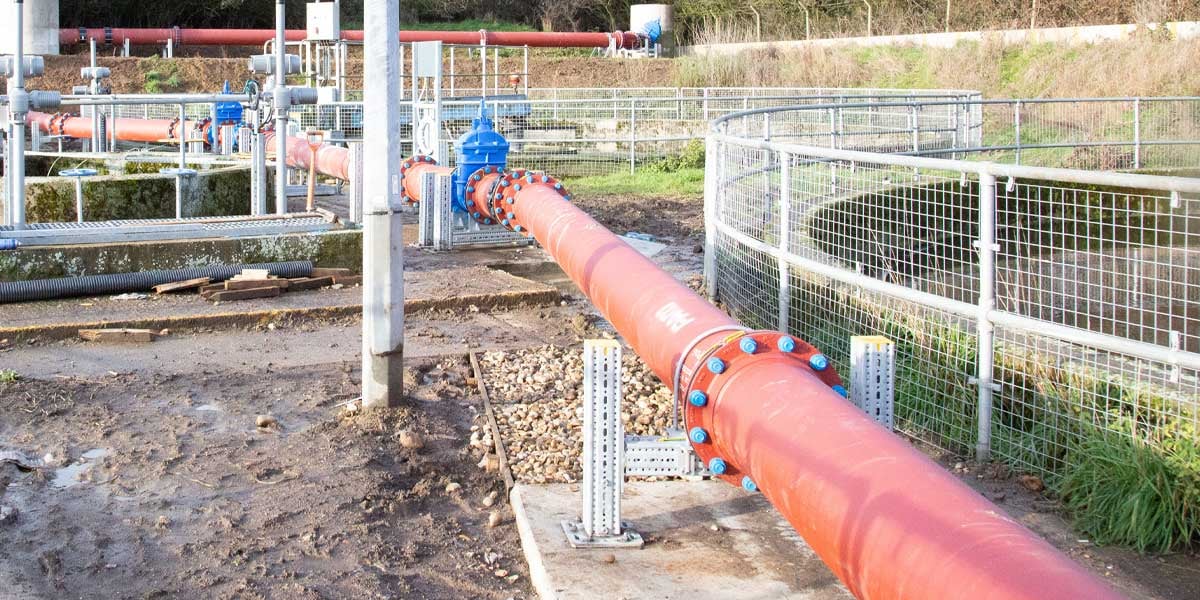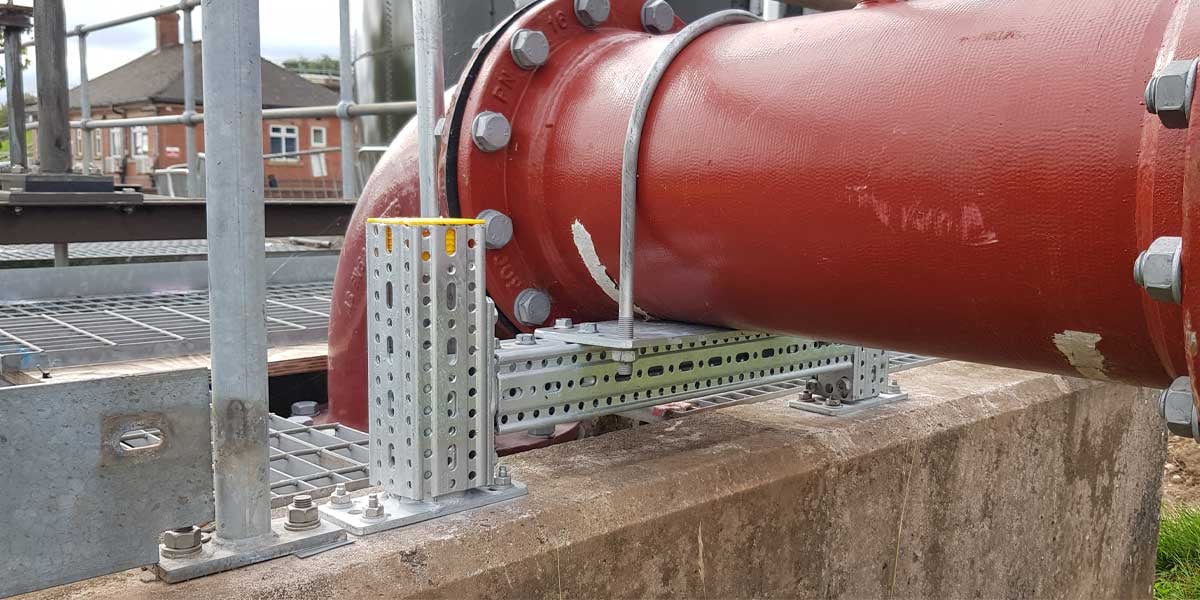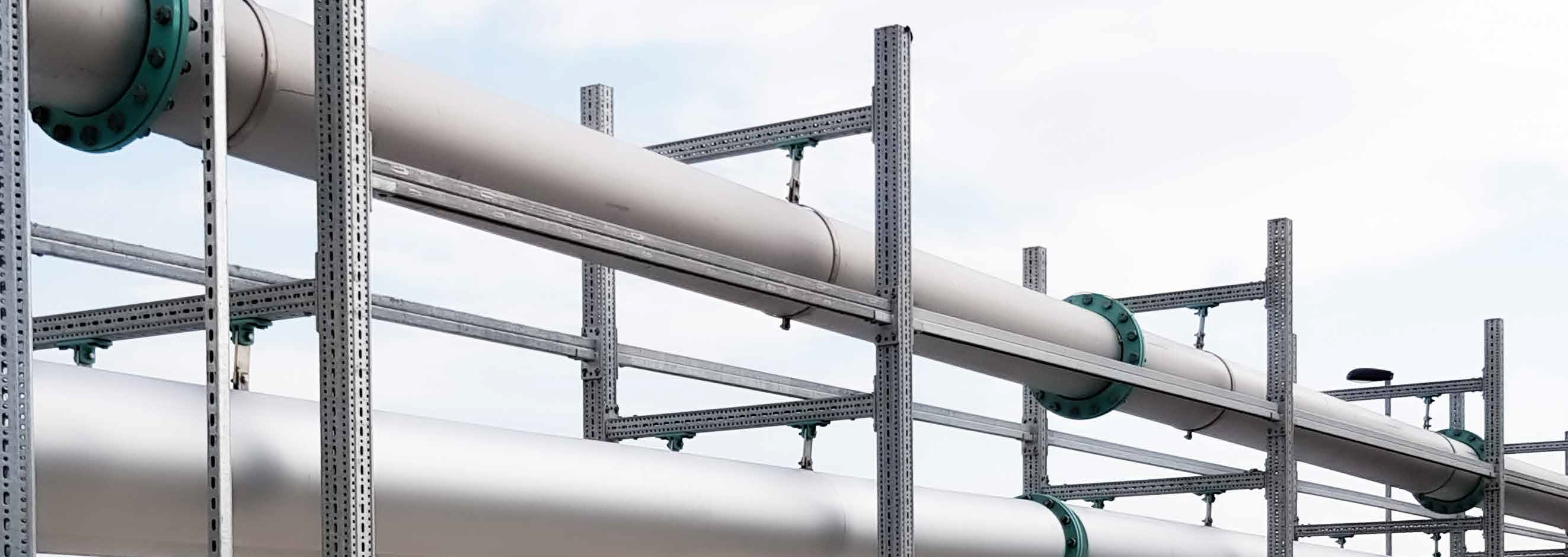You might think you’ve got the process of fabricating pipework down.
There’s always been a go-to method for it. Usually, it’s either taking measurements on site or using site drawings to size up the supports you need and then consulting a fabrication company to fabricate them.
The limitation to this traditional method is that the site drawings don’t always match the actual measurements/sizing, location and placements. This is due to the rugged nature of most outdoor environments, and the lack of margin for error in plant rooms. Even if the difference is minimal, it can have a considerable impact when installing ductile iron or steel pipework and we understand that it can be a headache.
So, what if there’s a better, more efficient way? Particularly with larger pipework e.g. in water or sewage treatment plants, or plant room pipework in large residential buildings (shell and core), there are quite a few things you should think about to get it right, as listed below.
- #1 Size of the pipe
- #2 The material of the pipework
- #3 Anchor/fixing specification
- #4 What type of environment is the pipe supports in?
- #5 Dynamic loads, thrust, and thermal expansion
- #6 Placement of the supports
- #7 Project deadlines
After all, as with everything else in construction, things are changing, and contractors are dealing with increased deadline and cost pressures. Plus, note that most of the above is information you need to present to the design engineer to reach the optimal solution anyway, so you wouldn’t be doing much extra work.

#1 Size of the pipe
Self-evidently, when trying to support pipework in a residential building, the size of the pipework is one of the first things you’ll have to keep in mind. First of all, the sizing principles differ between types of pipework – some are measured in inches while others are measured in millimetres.
Also, the size of your pipe will initially determine what size of the connection between the pipe and support needs to be, regardless of what connection type you use. If it’s a 6-inch pipe, it will need a connection that’s suitable for a 6-inch pipe, and so on. As a pipe gets bigger, the distances and radius change. So it’s important to be aware of that for the designer to specify the right component to fix the pipe to the support.
For the designer to know what connection to use, they’ll also need the diameter of the pipe. This would either be called NB or Nominal Bore with ductile iron pipe (diameter of the inside of the pipe), or Outside Diameter (OD) for steel pipe.
Also, take into account if insulation is needed because the designer needs to be aware if there is. Depending on how you connect to the pipe, insulation blocks may need to be used, adding thickness to the pipe (affecting size). If the pipes are insulated but too close to each other to allow every pipe to be supported, secondary brackets might be needed.
On top of that, two adjacent pipe clamps may clash because of the tabs on the side. If the designer is given all of this relevant information, he or she will be able to take it into account and reach a reasonable solution, and if there’s any offsetting of supports needed. With a flange connector, this isn’t an issue. However, to anchor the pipe you shouldn’t just use an insulation block because it can slide off – you need to clamp directly to the pipe and then insulate around that.

#2 Material of pipe
Along with the size, the material/type of pipe also affects which connection type you’ll need. Each connector is suitable for certain pipe sizes and types
There is a variety of different types of pipes and materials they can be made of; from ductile iron to steel to tru-bore and so on. And one of the key things that determine the suitable connector type is whether the pipe has flanges or not. So, you must make sure that the designer knows which type of pipe it is (flanged pipe vs non-flanged pipe) so that they can make the best judgement on which supports are necessary.
If you are anchoring the pipe, when possible, you should connect to the flanges as this is the most secure way – but it’s not always an option as it might clash with something below. Where this is not possible a direct to pipe, split band type anchor can be used.
For a standard pipe support, you could use U bolt, split band, or saddle clamp. A variety of interfacing components are available so these can be used in conjunction with both channel systems and modular systems such as Sikla Framo.
For stainless steel pipe, you can’t have galvanised steel touching it – if those 2 metals touch, it causes a reaction called galvanic corrosion. Instead, you have to isolate the two by using a pipe clamp as it comes with a rubber lining. If using U bolts or saddles, you must use an isolation strip.
Ultimately, the material in the pipework and its size define the type of connection between the support and pipe should be.
#3 Anchor/fixing specification
When it comes to large, plant pipework, in most cases you’re fastening the frame directly to the floor or ceiling, meaning you’ll have a foot/baseplate (although in rare cases you may fasten to the wall). Of course, in order to successfully fasten and stop the support from moving, you need something… yep, an anchor or fixing!
Depending on how far along the project you are, sometimes there may have already been an anchor specification created for the project. At some point, testing might have taken place to confirm that a particular anchor has been tested in the substrate, and therefore it’s the one that should be used. So before anything else, check if there exists an anchor specification for the site.
In outdoor instances, and particularly environments that may be corrosive like with water treatment works, quite often a stainless steel anchor will be requested for its higher corrosion resistance compared to standard galvanised steel. But bear in mind that the baseplates are made of mild steel and then galvanised, so you need to isolate it from a stainless steel fixing by using a nylon washer to avoid galvanic corrosion. This applies to both welded and modular steel pipework supports.

#4 Environment
We’ve hinted at this one here and there as it somewhat overlaps with the other considerations. Modular pipework (Framo) is often used in both indoor and outdoor situations because of its adaptability and the corrosion protection that comes with it off the shelf. It’s suited to most applications, therefore a lot of people use it indoors purely because of all of the other favourable attributes that you get with it beyond just the corrosion protection. So, whilst the environment isn’t a concern with modular steel/Sikla Framo as it already has HCP (high corrosion protection) coating, it is with welded steel.
Oftentimes in a non-corrosive indoor environment like a plant room, the supports will only be painted with a primer or red oxide coating as that is usually sufficient protection on top of the mild steel. However, for outdoor situations, you’d need something a bit heavier duty! That’s when you’d send it off to get hot-dip galvanised. This would take some extra time, so be mindful of that.
#5 Dynamic loads or thrusts
This one is an important one (well, they all are, but you know what I mean). The loads determine how well your pipe support can perform. At the end of the day, it all comes down to ensuring that they are fit-for-purpose, and can take the loads applied to them. The ever-relevant question that is “if challenged, can you demonstrate that the bracket you’ve installed is fit-for-purpose?” strikes yet again.
There are two types of loads you should watch out for; static loads which are the direct, constant loads sitting on top of a support, and dynamic loads. Dynamic loads are usually liquids (in most cases, water) running through the pipes rapidly and usually in a specific direction, creating this great force. You should also think about whether the pipe has any bends (and where) as this produces more thrust. Even with straight pipework, dynamic forces have an impact, but with bends, the impact is amplified. In some outdoor situations, the pipework can be quite high off the ground, and with height comes another type of dynamic load which is wind. The higher up the pipe is, the more you have to take wind loads into account.
Another type of dynamic load the design engineer will need to know about is thermal expansion to decide if they need to allow for it.
This, again, would impact the design and might call for adding bracing to the support. Only a design engineer has the skills to be able to do these calculations, which is further proof of why you’d need one involved from the start to arrive at an optimal solution that can withstand these loads.
When thinking about loads, you also have to be conscious of anchoring the pipe (i.e. The engineering term meaning to stabilise it, not anchor/fixing). The purpose of anchoring is to stop any form of movement, whether it be drops and falls or lateral movement. Connecting to a flange does exactly that, but with a U bolt or an insulation block, the pipe will move with enough force.
Any points that need to be anchored down will also impact the connection type to be used so again, make the designer aware of where the pipe needs to be secured.

#6 Placement of the supports
All the above points, in one way or another, impact the position of the supports as well as the connection type. Once you think of everything else, it becomes clearer where you can position the supports.
It’s important for someone who is sourcing and installing pipe supports to have a reasonable idea of where the supports should be placed. The designer will make the final decision based on all the factors and correct information that you’ve given them and whether your desired location can actually work.
As mentioned in the second consideration (material of pipework) you need to be mindful of any potential obstructions. With a goal post support, for example, you have to be aware of anything not only below it but also nearby it. The size of the pipe affects this, which is also influenced by other elements like the loads. Where and how often you support the pipe also affects the loads on each support, and so on – basically, it’s all interconnected!
#7 Project deadlines
More often than is ideal, people leave pipe supports for the last minute thinking they can quickly buy components off the shelf. However, it sometimes takes much longer than you might anticipate. Particularly when using the traditional method of welding and galvanising, there needs to be sufficient time left in order to get all that done.
If a contractor wants the pipe supports finished as soon as possible, welding wouldn’t be the best option. That’s where modular pipe supports come in. They can be done much faster, but that doesn’t mean that they’re just commodity products you can just buy and have ready at the same moment – no!
To get the best result, give your provider who is designing and possibly fabricating the supports all the necessary information and as much notice as possible. There still needs to be adequate planning and early engagement with the designer, and that includes letting them know the deadline. That way, they know exactly how much time they have to arrive at the best solution, and also where to fit it in. Workstreams are a real thing, and without a deadline, how would someone know how to prioritise one job over the other?
Conclusion
In summary, you should pay all the aforementioned factors a lot of thought and provide as much of them as you can to your designer. In various ways, they all affect how the designer ends up with the optimal solution.
They’ll also help him or her decide what kind of pipe support is needed, whether it’s a goal post or a ‘T-post’. Additionally, it can save you a significant amount of stress if you engage as early as possible – so don’t procrastinate!
We hope this article has given you some guidance and wish you good luck with your future projects.


